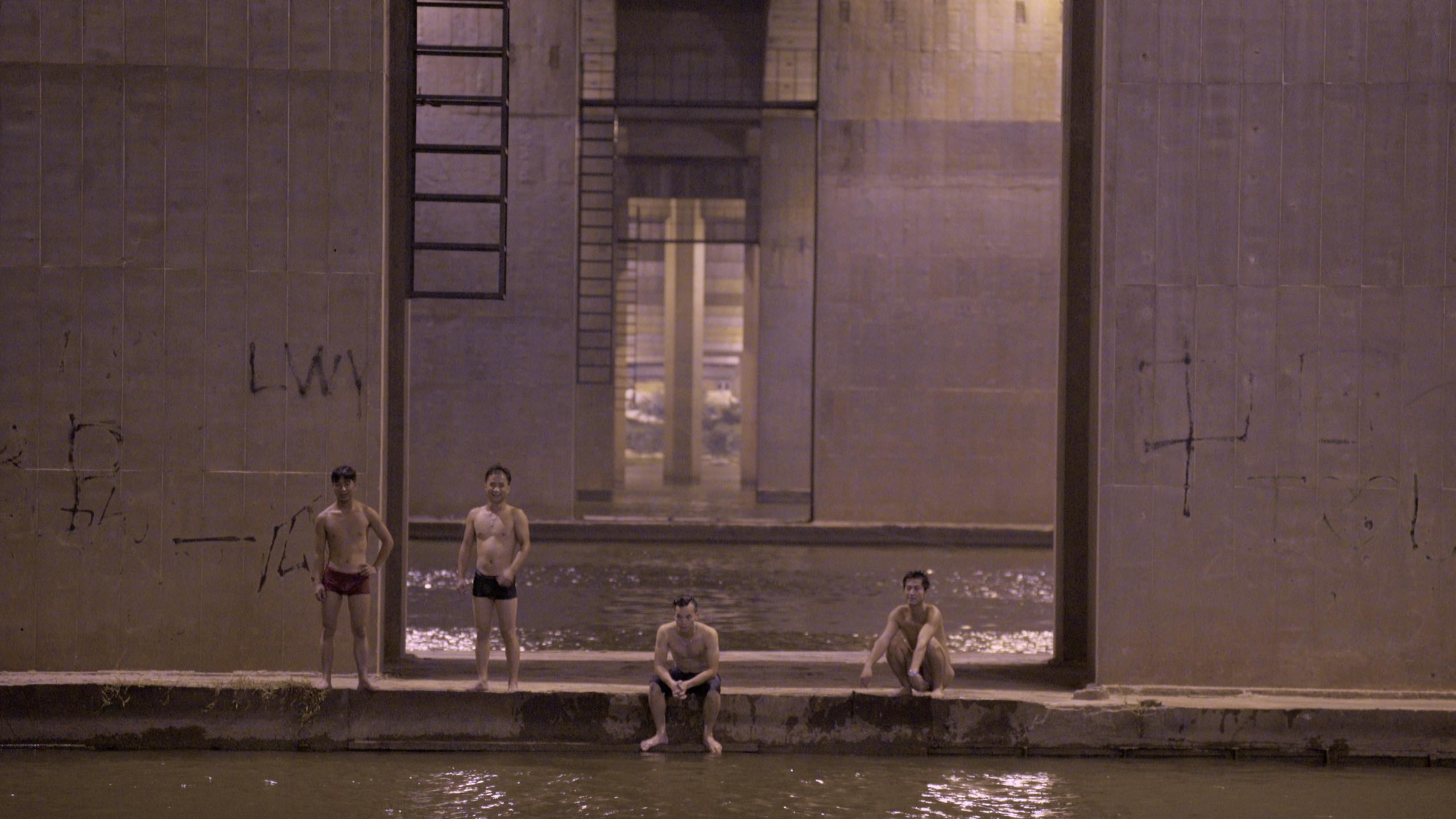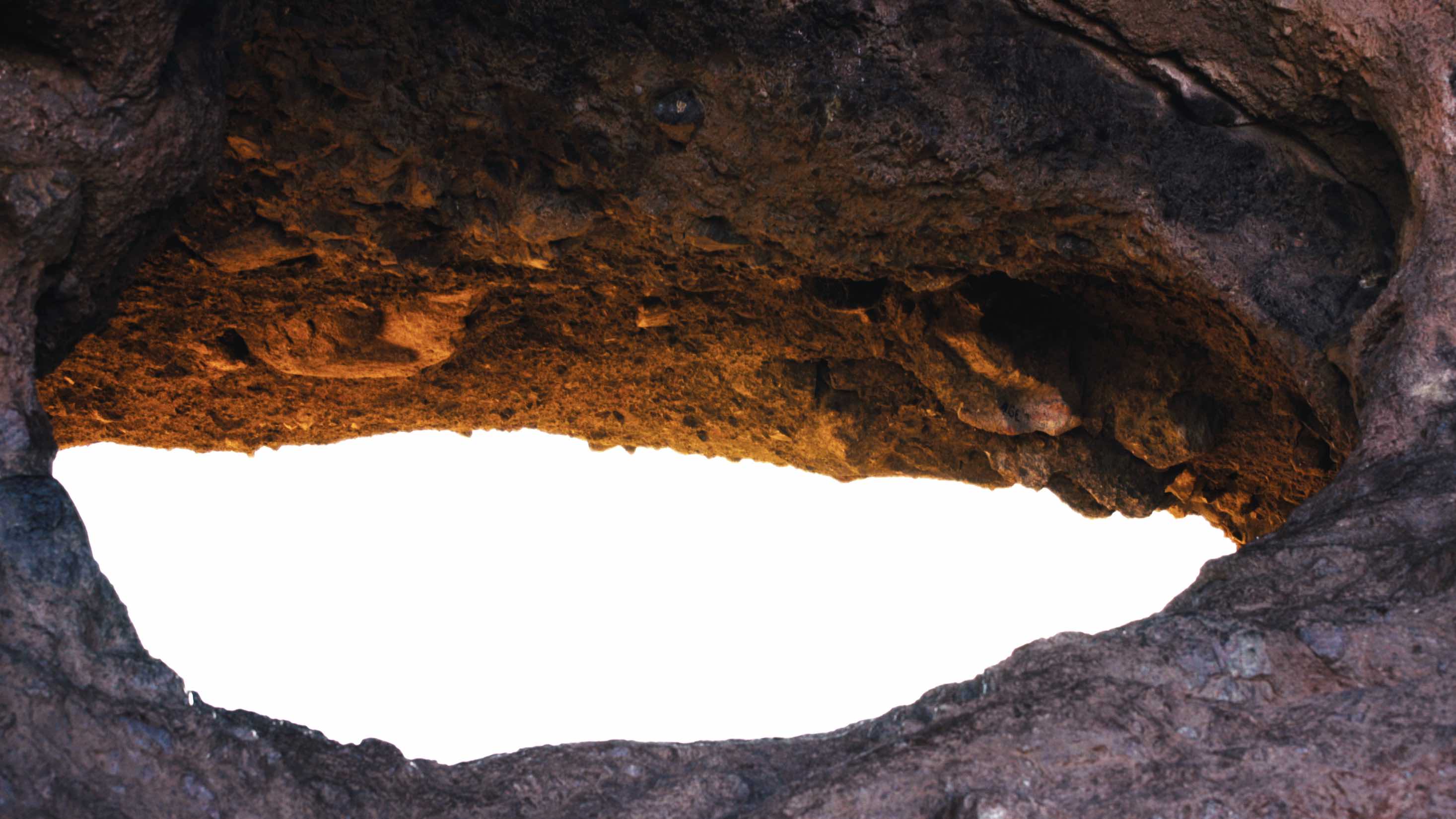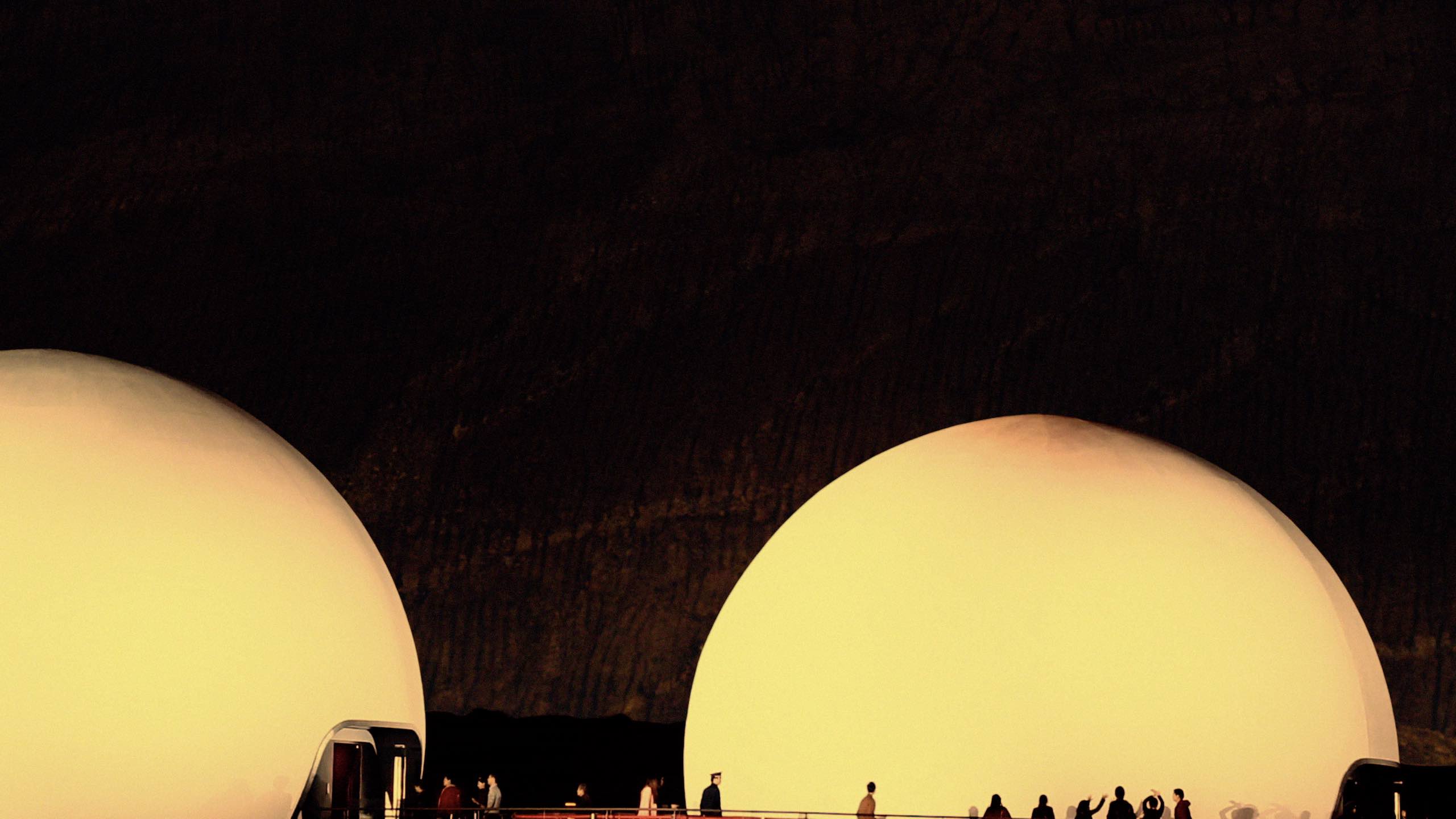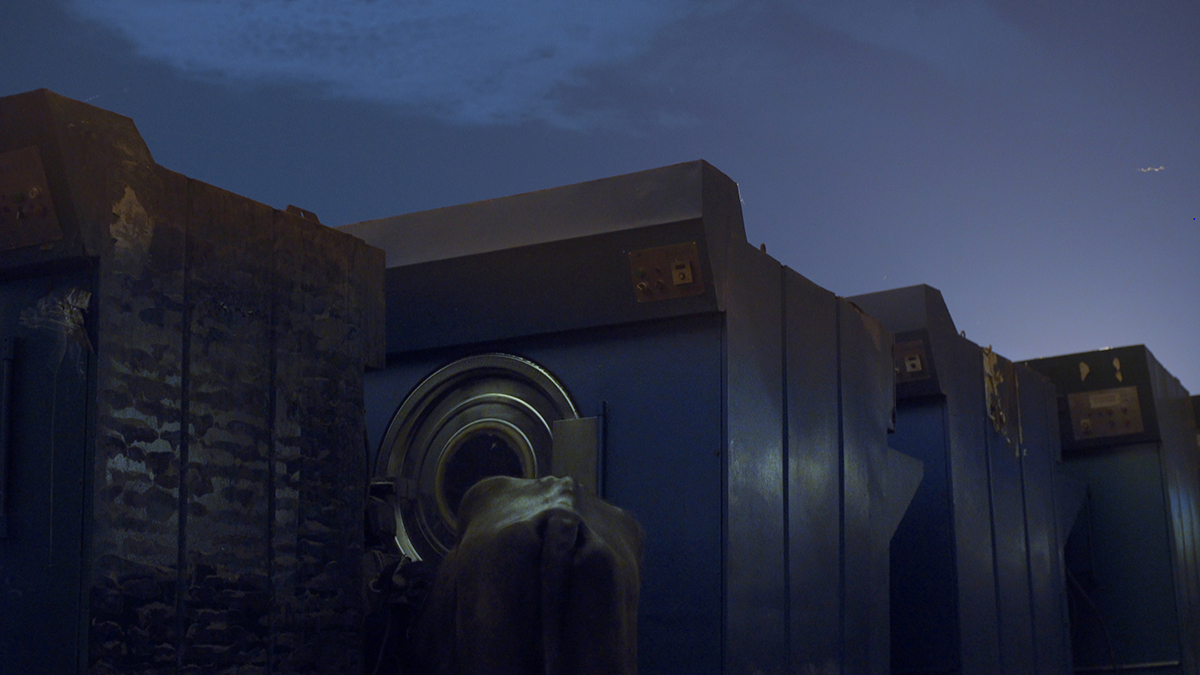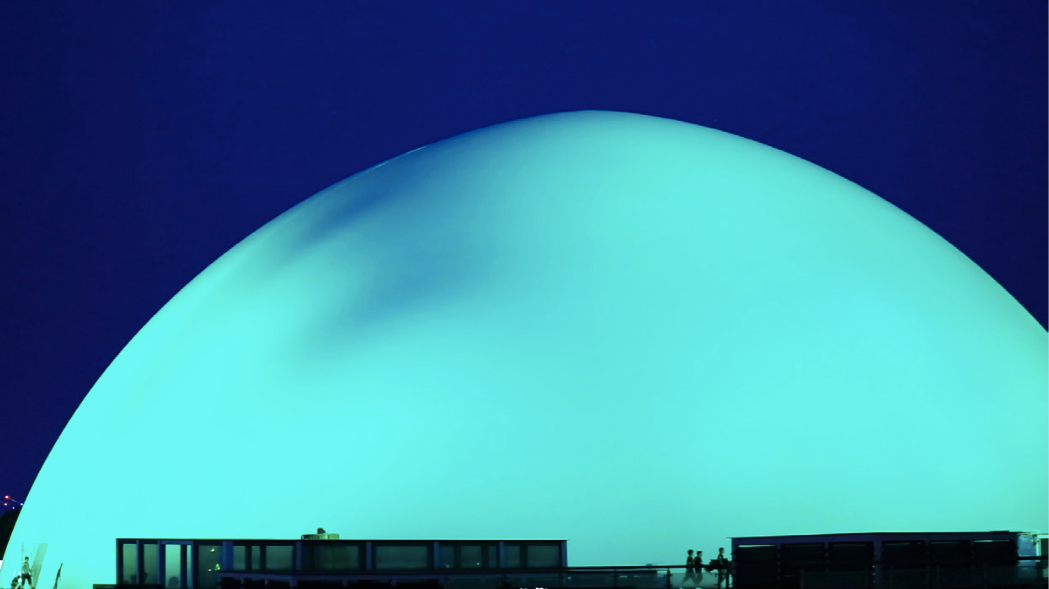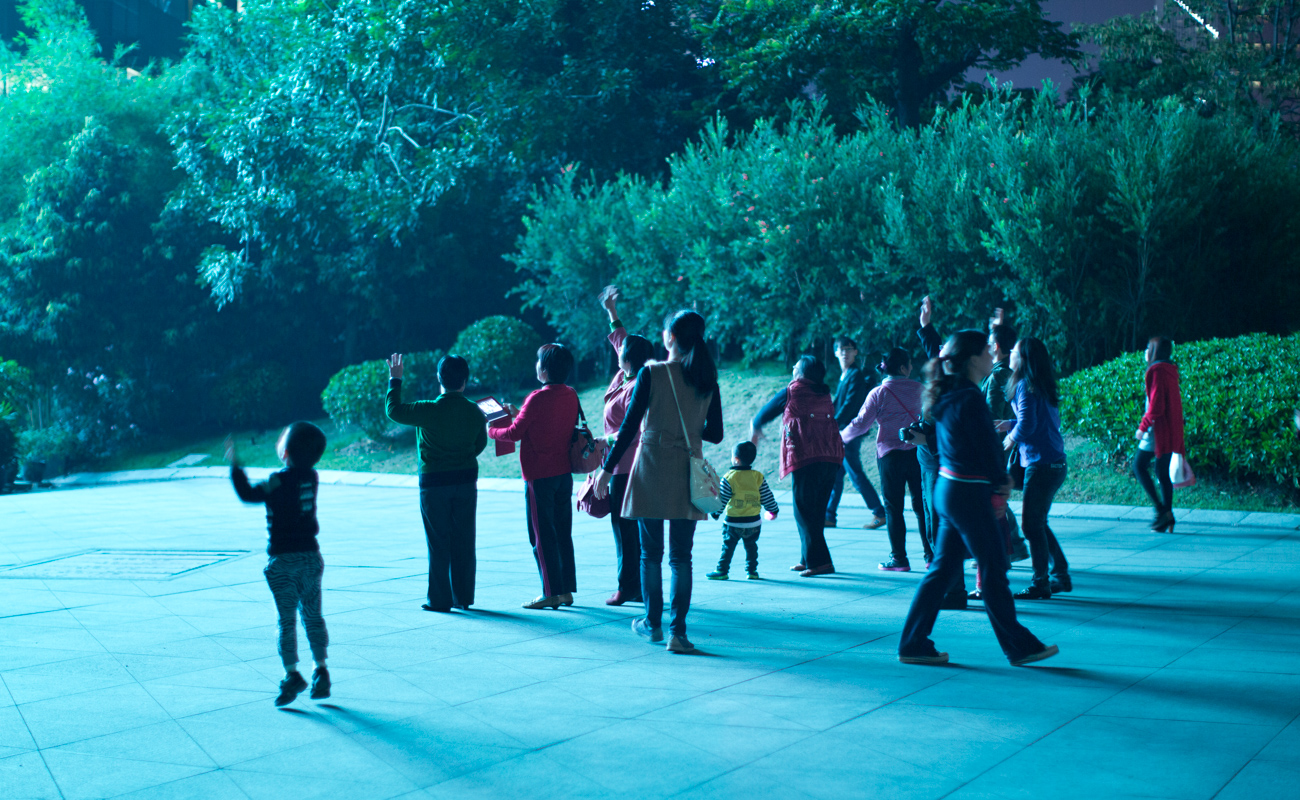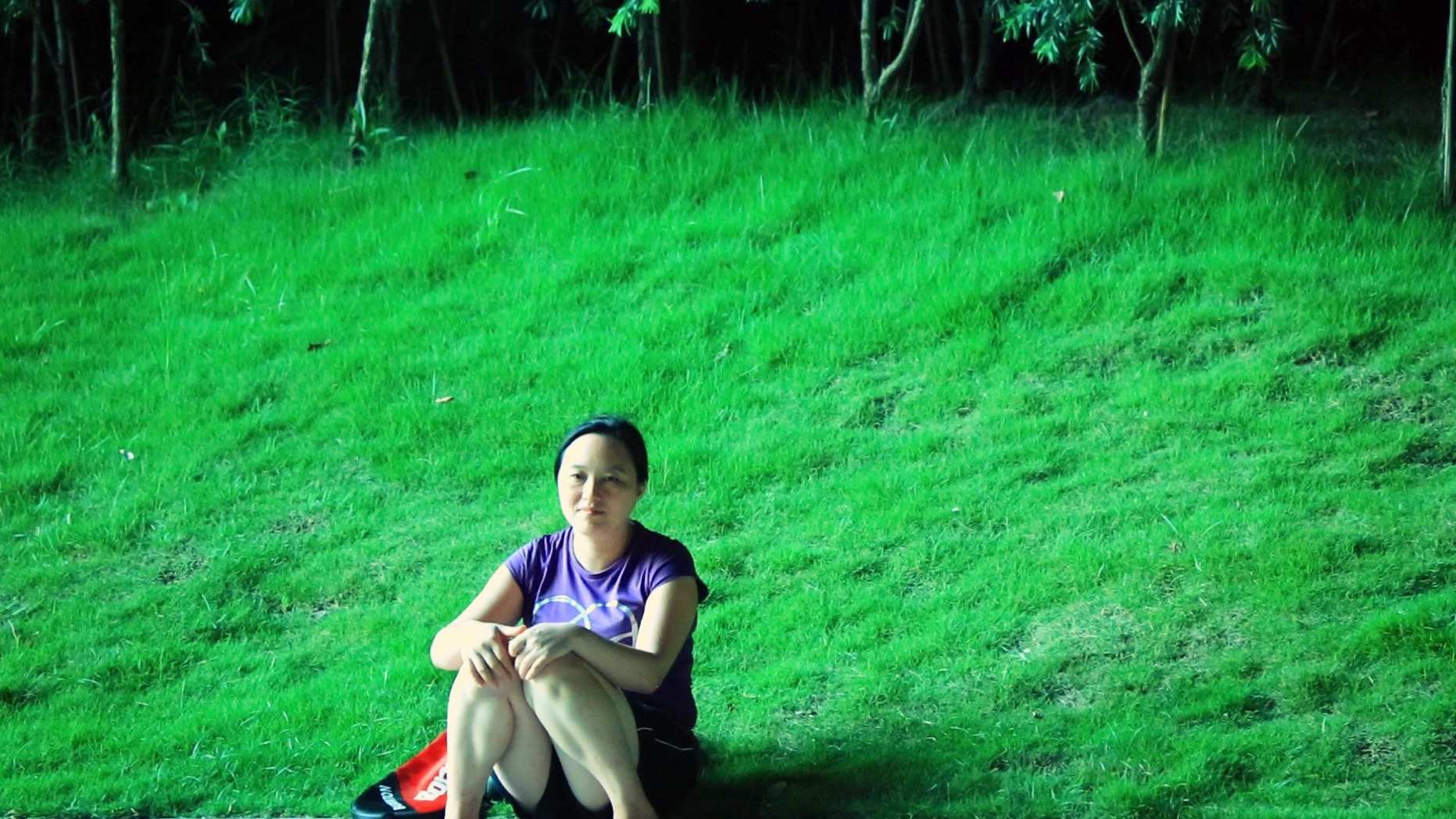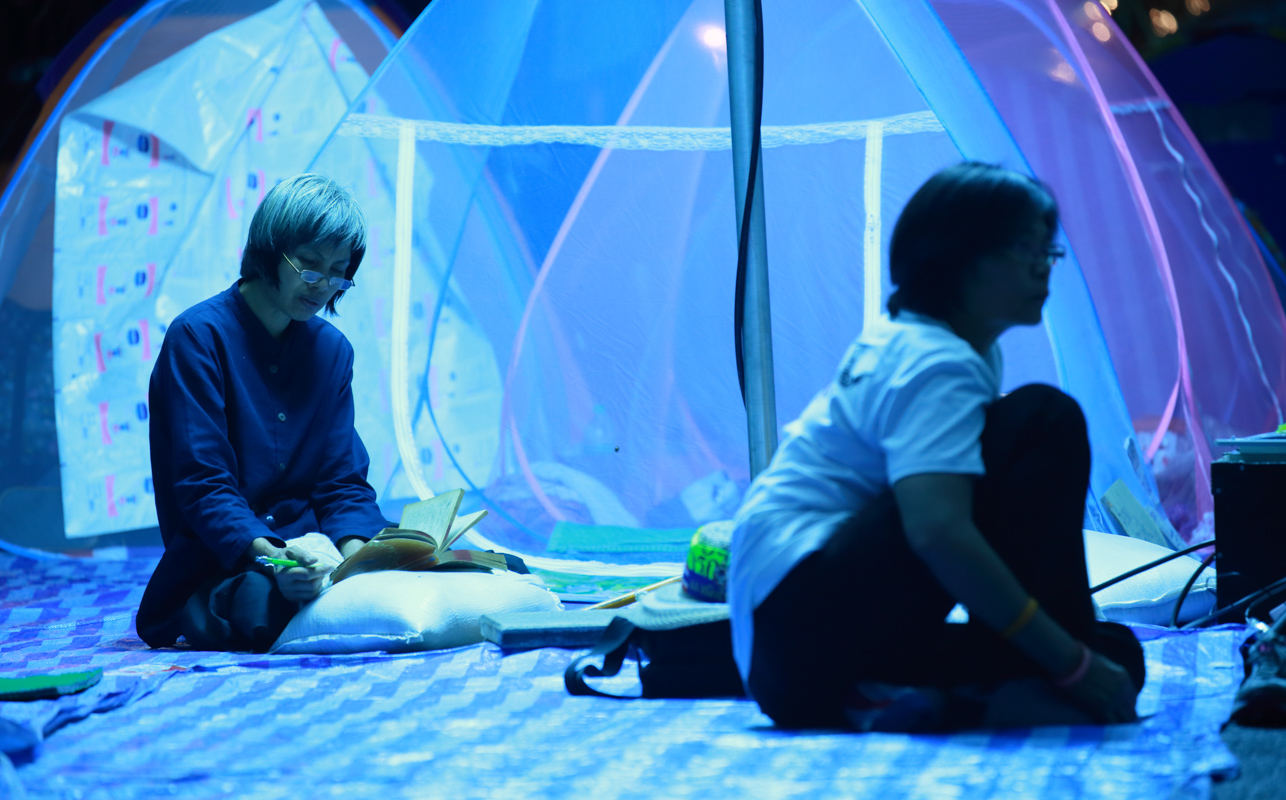Infrastructures, Topography, and Landscapes
– Hu Fang in conversation with Zhou Tao
Zhou Tao (hereinafter referred to as ZT): First there is Nature, a natural landscape. Then, mountainous folds started appearing in infrastructures. I nd it a violent con ict. It is not a kind of ction, just a con ict. It gives the feeling of a wrinkled landscape which is created by human. They are neither the mountains-and-waters of Nature, nor are they cultivated feelings projected upon the landscape. It is violent and con icting; it mercilessly drops the landscape in front of your eyes. This is what I call con ictual topography, a very important motif in my work. The moment I see those men shing on the lake, it feels like discovering a pillar between the earth and the sky. There are also surreal elements in this imagery, which results from a kind of infrastructural terrain. To me, infrastructure is a set of transformative conditions.
Hu Fang (hereinafter referred to as HF): This kind of transformation does not only operate in one direction—it’s reciprocal. In the lm, we are precisely confronted with a kind of spillover e ect from the tension generated by infrastructural terrain: the nighttime shing takes place in
the shadows of industrial remains, under the overpass and in the muck. In the remnants of the New World, men seem to be redundant. But they also invent forms of self-su cient entertainment. Infrastructures are built to control and reform, but it cannot regulate the dispersion of life, which always escape the framework of infrastructural planning.
ZT: That’s the hunch of the New World, which lies in the self-su ciency of the shing men. Our society has assigned people into categories, in which there are no redundant spaces, no excessive frames, and no extra landscapes. But these surpluses are everywhere and they accumulate when you try to approach with the act of lming, eventually you become part of the landscape. I don’t think they are spectacles, they are all around. In fact, when you are building physical structures, you are also creating the shadows and excessiveness, as well as a kind of possibility. People can nd their joys of life here without going to a karaoke every day. I think the shing men are my heroes in my lm. They are pioneers.
HF: At the beginning of the lm, you frame the river bank under the bridge like a theater. It is clearly a form of infrastructure, and a stage for human activities. Image-making is like a kind of topographic distribution, with di erent geological textures and its corresponding perceptions. When we get to the part of nighttime shing, I feel that we are entering a thick, viscous zone, which unfolds like shallow depressions in the film.
Zhou Tao, Fán Dòng (The Worldly Cave), 2017,Single channel 4K UHD video (16:9, color, with sound), 47 min 53 sec, video stills. Courtesy of the artist and Vitamin Creative Space.
ZT: That is the moment to bring forward the shallows, and it won’t deliver the same e ect if it is postponed. It gets more surreal after that. I only realized how the terrains were formed after the editing. Together with the sirens of the rescue scene, the integrity of a locale comes into being. I found consistency in the ows of emotion accommodated by the images.
HF: Here, the pairings of back and forth, up and down have emerged. In an ambiguous process, things move, sites disappear, time travels, and it goes beyond the designated meanings and ends.
ZT: The travelling back and forth can happen within the same spot, it doesn’t have to be from point A to B. This kind of travel is closer to lmic narrative. If we are not dealing with documentary narratives, nor a story with protagonist, then what kind of spatial movement has supported the narrative?
HF: It manifests as forms of recurrence. I think light also plays an important role in shaping form. It allows terrain to take shape, transcending a single visual experience. It is even internal to how the narrative takes shape. For example, in Blue and Red, the light source is relative clear, meaning that it fully exposes the social origin of such light. But in Fán Dòng (The Wordly Cave), the way in which light molds form is di erent, in the sense that it no longer relies on a social light source.
Zhou Tao, Blue and Red, 2014,Single channel HD video (16:9, color, with sound), 25 min 14 sec,video stills. Courtesy of the artist and Vitamin Creative Space.
ZT: Another point, I think the observation perspectives di er in these works. Only in Fán Dòng (The Wordly Cave) does light truly start to shape a terrain and its composition, whereas the light in Red and Blue is immersive like alcohol. Of course, within all this there are subtle changes which are produced between the undulations and have merged with the terrains simultaneously.
HF: Speaking of topography, I am reminded of something Dong Qichang said: “The faraway mountains rise or fall to pick up force, while scattered woods elevate or descend to project emotions. This is the essence of painting.” This is perhaps why the correlation between topography and lm holds such an appeal. Rather than making external connections between material compositions, it is about nding a deeper structure of resonances. A site often creates an illusion: a New World seems to come into being, but there are no longer spaces for human to take refuge in. In Fán Dòng (The Wordly Cave), as the terrains unfold, humans are pushed to confront their own existential conundrum.
ZT: In terms of waters-and-mountains painting, I don’t think my lms can be compared to a long scroll that unfolds on one side. Instead, as one side unfolds, the other side closes. You hardly get the whole picture, as the landscape is not represented a panorama. You need to throw your own body into these terrains, so as to feel the softness and hardness and what you would see when you look up…etc. I suppose it is about “being within”.
HF: It doesn’t have to contain a so-called wholeness, since it cannot be seen at one glance. Instead, it has a restrained quality, like when you are about to speak, yet words get caught at the tip of your tongue.
ZT: I think it has to do with this con ict that you speak of. Con ict might just be a signi cant mood that ultimately attracts you to interpret and decode a certain topography. This feeling cannot be grasped at one glance. Regarding the formation of point of view, I’m deeply in uenced by waters-and-mountains painting and literati poetry. However, I haven’t thought much more about how the languages of Chinese paintings could be transformed to di erent medium such as lm. There are spiritual resonances. What initially drew my attention to the infrastructural mountains that I spoke of earlier, had to do with con icts and ruptures related to the historical context of Literati Paintings. The waters-and- mountains are not accessible landscapes on paper that people normally think of. By rediscovering the relationship between the body and nature,they project a sense of disruption because Chinese culture went through traumatic changes in the Yuan Dynasty. The Chinese intellectuals were excluded from the political mainstream, and they retreated to observe the meanings of their surrounding environments and started to produce a kind of painting that does not rely on color and technique, but were imbued with spirits and feelings straight from the heart. Song Dynasty landscapes are also very beautiful, but they don’t have the same implications. Today is also a time of great turmoil, and the challenges are global. It feels thrilling to invoke the concept of landscape, as you have to throw whatever that makes you uncomfortable in the equation, and you can’t just lie there and enjoy yourself. You don’t have to own a villa, a grass hut would be enough. Only with the right frame of mind can we have a future. An easy life does not lead to imagination. Confronted with globalization, what fate lies in store for landscapes in Chinese painting? It’s not that I am borrowing a certain technique or genre, but rather that I am exploring this motif, challenging it and questioning it.
The creation and construction of this topographical narrative is very interesting, and just like what we talked about, there is nothing that can be taken in all at once, but there also exists a form that could project the existence of another terrain. That’s what lms and images try to convey. Of course, sometimes a ects can be found between structures, and they are possibly prioritized over physical spaces and structures. Perhaps it is akin to writing. In preserving the structures between di erent realities, I try to keep contact with a certain realness, then I wait to see how other possibilities unfold. It is hard to be analytical: when you are at the editing table, images start to emerge and become self-constitutive ows.
The conversation took place in Zhou Tao’s studio, Guangzhou, May 2017
Included in Zhou Tao: The Ridge in A Bronze Mirror Guidebook, Times Museum, Guangzhou, 2019, Chinese and English, pp.79-83.
